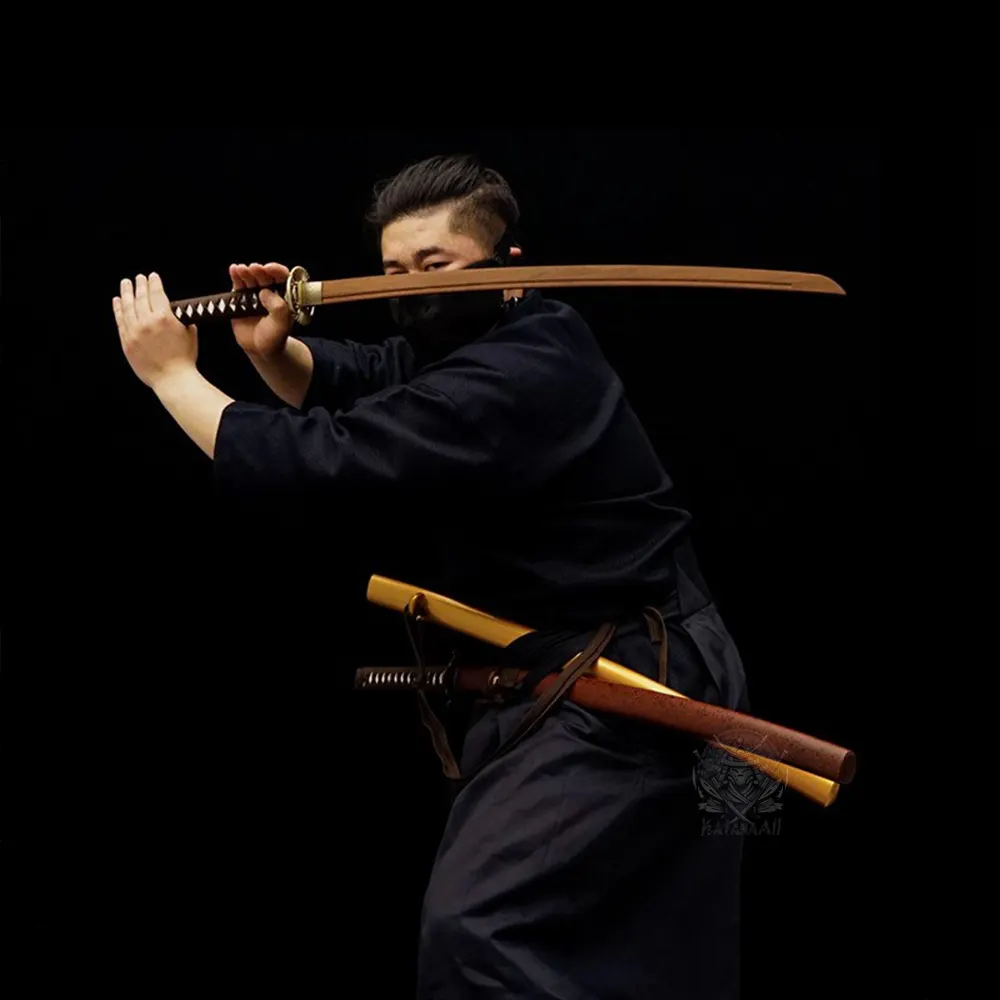Famous Historical Katana Battles: The Role of the Samurai Blade in Legendary Fights

If you’re a fan of samurai culture or just appreciate the incredible craftsmanship of a katana, you’ve probably heard stories of legendary battles where these blades played a critical role in shaping history. From famous samurai duels to battlefield confrontations that influenced the course of Japanese history, the katana has earned its reputation as one of the most iconic and deadly swords ever crafted.
As someone who’s been deeply fascinated by the samurai tradition, I can tell you that these battles are not just stories—they’re real moments where the katana was the difference between life and death. I’ve spent years researching, reading, and even practicing some martial arts that use the katana, and these historical battles still resonate as some of the most intense moments in Japanese history.
Let’s dive into some of the most famous historical katana battles, how the katana shaped these legendary fights, and why they still hold a place in popular culture today.
The Power of the Katana: A Blade that Changed History
Before we get into specific battles, let’s take a quick moment to understand why the katana was such a formidable weapon. The katana was designed not only for slicing through armor and flesh but also for speed, precision, and efficiency. Crafted with high-carbon steel, these swords were incredibly sharp and well-balanced, perfect for quick, decisive strikes.
Whether in the hands of a master swordsman or a warrior in battle, the katana had the power to decapitate or pierce armor with ease. But it wasn’t just the blade—it was also the samurai code of honor (the Bushido), which meant that these swords weren’t just tools of combat; they represented a way of life. Every strike, every battle, carried meaning beyond mere survival.
Now, let’s look at some of the most famous katana battles that shaped history.
1. The Battle of Sekigahara (1600)
One of the most famous battles in Japanese history, Sekigahara was a decisive battle that marked the beginning of the Edo period and the rise of the Tokugawa Shogunate. This battle took place on October 21, 1600, and it involved two major factions: the Tokugawa clan and the Ieyasu Tokugawa’s opponents. The katana was wielded with lethal precision in this battle, as samurai on both sides fought to decide the fate of Japan.
- The Role of the Katana: At Sekigahara, the katana wasn’t just a weapon—it was a symbol of loyalty and honor. The battlefield was filled with duels where warriors wielded their katanas in close combat, deciding the fates of entire armies.
- The Outcome: Tokugawa Ieyasu’s victory at Sekigahara solidified his position as the shogun, and his family ruled Japan for over 250 years.
| Battle | Year | Significance | Katana Role |
|---|---|---|---|
| Battle of Sekigahara | 1600 | Ended the Sengoku period, started the Edo period | Close combat, decisive strikes |
Why This Battle Matters
The katana’s role in Sekigahara isn’t just about the fighting; it’s about the symbolism of the sword. The samurai, bound by their code of honor, fought not just for victory but for legacy. A katana wasn’t just a tool of war; it was an embodiment of the samurai’s spirit.
2. The Duel of Miyamoto Musashi and Sasaki Kojiro (1612)
When people think of famous katana duels, the name Miyamoto Musashi usually comes to mind. Musashi is widely regarded as one of the greatest swordmasters in history, and his duel against Sasaki Kojiro is the stuff of legend.
- The Duel: The duel took place in 1612 on Funajima Island. Musashi, renowned for his unique style of two-sword fighting, faced off against Sasaki Kojiro, a master with a longer blade called the nodachi. Musashi’s katana was shorter, but it was faster, and his unconventional style caught Kojiro off guard.
- The Outcome: Musashi won the duel with a single strike, making this one of the most famous katana battles in history.
| Duel | Year | Significance | Katana Role |
|---|---|---|---|
| Musashi vs Kojiro | 1612 | Showcased Musashi’s unique two-sword style | Speed, precision, unconventional use |
Why This Duel Matters
The duel between Musashi and Kojiro is a perfect example of how the katana was used not just in battle, but also in one-on-one combat. Musashi’s victory is a testament to how strategy, creativity, and a well-placed strike can turn the tide of battle.
3. The Battle of Okehazama (1560)
Another key battle in Japanese history where the katana played a crucial role was the Battle of Okehazama in 1560. This battle was pivotal in the rise of Oda Nobunaga, one of Japan’s most famous warlords.
- The Role of the Katana: Okehazama is a great example of how leadership and samurai swords came together. Nobunaga’s forces were vastly outnumbered by the Imagawa army, but through strategic use of his samurai warriors (armed with katanas), he was able to decisively strike and take down the Imagawa leadership.
- The Outcome: Nobunaga’s victory at Okehazama helped him secure his path to power and consolidate control over Japan.
| Battle | Year | Significance | Katana Role |
|---|---|---|---|
| Battle of Okehazama | 1560 | Nobunaga’s rise to power | Swift and decisive sword strikes |
Why This Battle Matters
The katana was used as a tool of swift victory in Okehazama. Nobunaga’s samurai didn’t just rely on their numbers but used their katanas to strike with precision and leadership. It shows how the katana was as much a symbol of authority as it was a weapon.
4. The Siege of Osaka (1614-1615)
The Siege of Osaka was a major conflict between the forces of the Toyotomi clan and the Tokugawa shogunate, which had just gained power after Tokugawa Ieyasu’s victory at Sekigahara. It spanned several months and involved intense siege warfare.
- The Role of the Katana: While this was more of a siege, there were still numerous close-quarter battles where samurai used their katanas to fight in narrow spaces. The katana became a symbol of fierce resistance for the Toyotomi clan, who fought desperately to defend their legacy.
- The Outcome: The Tokugawa shogunate emerged victorious, and the Toyotomi family was destroyed, cementing the Tokugawa dynasty’s rule.
| Siege | Year | Significance | Katana Role |
|---|---|---|---|
| Siege of Osaka | 1614-1615 | Fall of the Toyotomi clan, Tokugawa dominance | Close combat, defensive struggles with katana |
Why This Siege Matters
The katana was not just a tool of attack; it was also a tool of resistance during the siege. Samurai warriors fought fiercely to preserve their way of life, and their katanas were the symbol of their uncompromising resolve.
FAQ: Famous Historical Katana Battles
Q: What made the katana such a powerful weapon in these battles?
A: The katana was incredibly sharp, light, and well-balanced, which allowed samurai to make quick, precise cuts. It was also a symbol of honor and discipline, which gave the wielder a psychological edge in battle.
Q: How did samurai use the katana in battle?
A: Samurai typically used the katana in close combat, relying on quick draws and powerful slashes. They also used it in duels, where precision and technique were key to victory.
Q: Was the katana used for defensive purposes?
A: While the katana was primarily an offensive weapon, it was also used in defense, particularly in parrying and counter-attacking during sword fights.
Conclusion
From the Battle of Sekigahara to the duel between Musashi and Kojiro, the katana has been involved in some of the most legendary sword fights in history. These famous battles showcase the power, precision, and cultural significance of the katana, as well as the incredible warriors who wielded it.
As someone who’s been fascinated by the art of swordsmanship, I can tell you that these battles are more than just stories—they are reflections of the samurai spirit, one that continues to inspire warriors and collectors around the world today. Whether you’re training with a katana or simply appreciating its history, these legendary battles will always be a cornerstone of samurai tradition.
